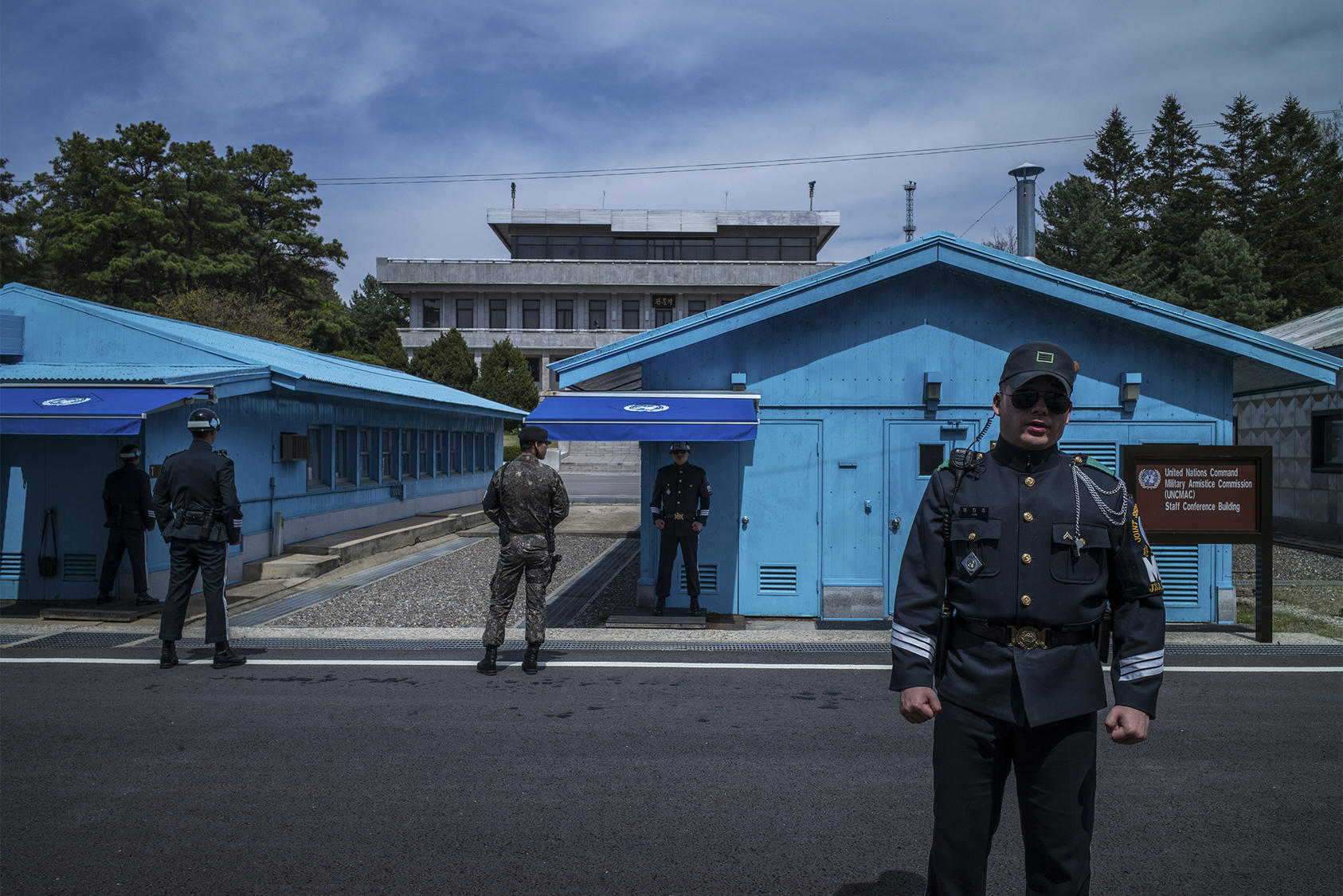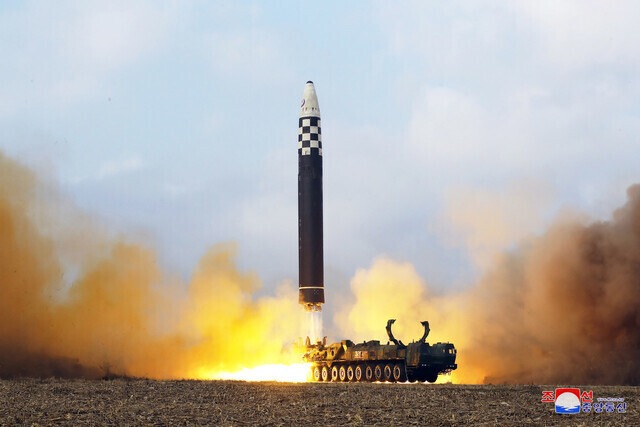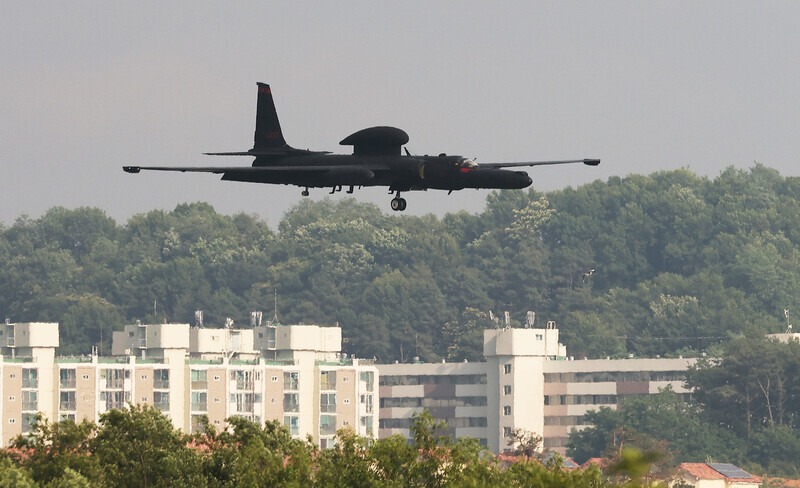North Korean Riddle: What Next after Nuclear Test?
THE KOREA TIMES
APLN member Kim Won-soo compares the situation in the Korean Peninsula to six horses pulling a loaded wagon and argues that South Korea must build a consensus on how to augment deterrence. Read the original article here.
North Korea is ramping up pressure through a series of missile tests and harsh verbal attacks against South Korea’s top government officials. The intensity of North Korean provocations is well illustrated by a record number of missiles launched on one day ― over twenty ― as well as the unprecedented frequency of missile tests averaging more than once a week for the last three months. Most observers concur that the seventh nuclear test is imminent. It is simply a matter of when, not if.
Why is North Korea doing this? North Korea is experiencing arguably one of its toughest periods both internally and externally. It is facing the triple perils of regime failure, international sanctions and self-imposed COVID-19 restrictions. North Korea’s saber-rattling could be a diversion intended for domestic audiences or a temper tantrum intended for external audiences. It could also be based on the North Korean leadership’s conviction that nuclear weapons are the ultimate key to regime survival. This conviction has most likely been reinforced by what has befallen Ukraine after it had given up nuclear weapons in exchange for a written security guarantee that was later scrapped willfully by another party. This conviction was recently given legal footing, as a new law was adopted authorizing a preemptive nuclear strike against a wide range of perceived threats of attack.
Over the last seven decades since the Korean War, durable peace remains elusive on the Korean Peninsula. North Korea’s 30-year-long pursuit of nuclear weapons has rendered the balance of power on the Korean Peninsula tenuous. Whether or not we get durable peace on the peninsula now depends on six horses ― two Koreas plus four major powers surrounding the peninsula, namely the United States, China, Japan and Russia ― pulling a loaded wagon.
The load on the wagon becomes heavier as the mutual distrust among the six horses intensifies with every failed attempt at a negotiated settlement. The wagon stands on two wheels known as peace and denuclearization. The six horses vary in size and differ in national interests. North Korea is the smallest of them, yet the wildest and most unpredictable. It also has the strongest desire to change the status quo. It is no longer interested in denuclearization. Rather, it wants to be recognized as a nuclear power and discuss arms control with the big boys.
But this is a non-starter not only for South Korea and the United States, but also for China and Russia. Such a move will be perceived by other horses as opening a Pandora’s box because it will likely trigger South Korea, Japan and even Taiwan to go nuclear, heralding the beginning of the end of the U.S.-led nonproliferation regime.
In view of this dynamic, nothing positive will come out of Pyongyang’s next nuclear test. The U.S. and South Korea will probably slap it with more and tougher sanctions. China and Russia will be hesitant to endorse such sanctions but will be unable to persuade Washington and Seoul to go easy. This means the North Korean economy and the livelihood of North Korean people will be further constrained.
Then what is the next step North Korea is likely to take? Pyongyang’s intentions are always hard to read, even for North Korea’s friends. North Korea is a three-level conundrum. Its socio-political system is dominated by the Communist Party whose decision-making process remains mostly opaque and at the mercy of one man. It is very much akin to what Winston Churchill famously said about the Soviet Union: “a riddle wrapped in a mystery inside an enigma.” This old reference to Moscow aptly describes North Korea’s behavior. It is an inscrutable and menacing player acting by its own rules. The key to understanding Pyongyang’s intentions lies in the innermost layer of the North Korean matryoshka dolls: the top leadership. The answer to the riddle of North Korea is the survival of the innermost core, the top leader himself.
North Korea has no good options. It already crossed most of Washington’s red lines, most notably the continued development of intercontinental ballistic missiles and nuclear warheads. Whether out of desperation or miscalculation, it may be tempted to take a much riskier path, like conventional military provocations and cyberattacks against critical infrastructure. Responding to such asymmetric attacks is extremely difficult because first, Pyongyang can deny involvement and second, it is not easy to identify appropriate retaliatory targets.
It requires careful thinking and advanced planning to alleviate these risks. South Korea must shake off the inertia and fatigue coming from protracted dealings with North Korean provocations. South Korea must think one step ahead and prepare for the worst, discreetly and together with allies and partners. Also, China should be warned so that it can restrain North Korea rather than embolden it by blocking the action in the event of another nuclear test.
South Korea must alert its citizens to the impending peril and try to build a consensus on how to augment deterrence. Deterrence and risk mitigation cannot be effective without a clear domestic consensus. If South Korea is seen as internally divided, it will be unable to take on the role of an anchor horse for the tough journey ahead toward a peaceful and denuclearized Korean Peninsula. A united South Korea is a prerequisite to any endeavor for diplomacy and deterrence.




